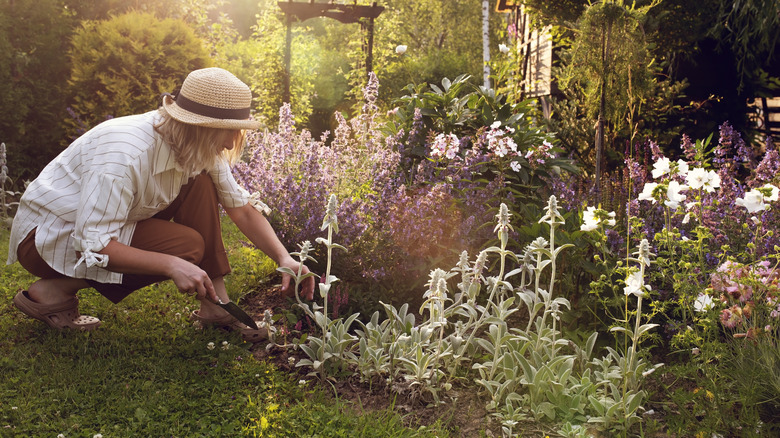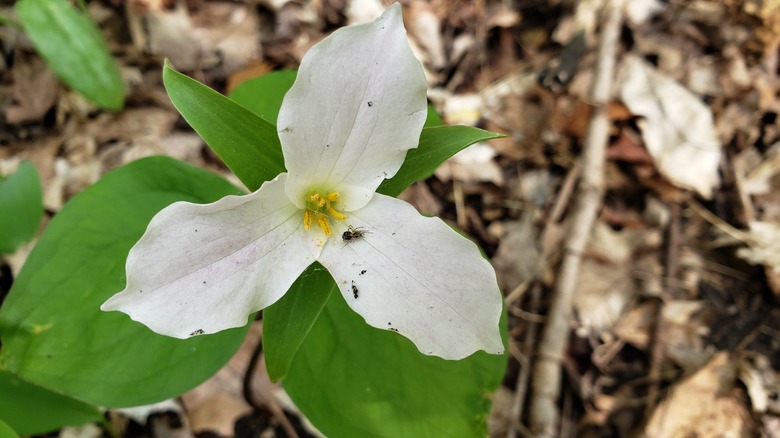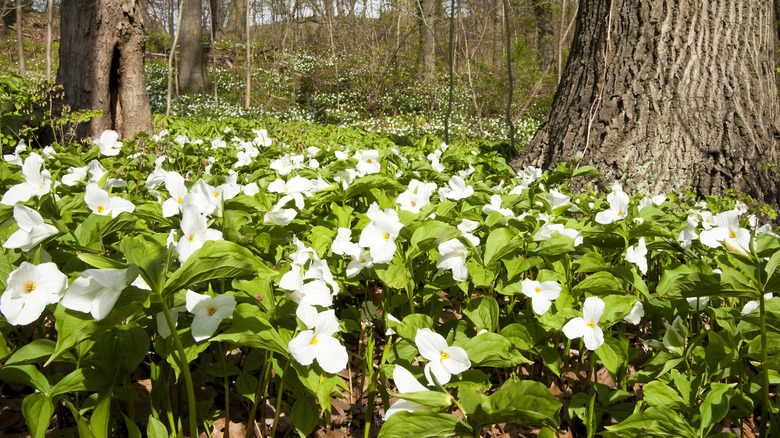The Gorgeous Slow-Blooming White Flower That's Worth The Wait
As fun as it can be to plant flowers and see the fruits (or blooms) of your labor within a season or less, there's also something to be said for the species that teach patience. Appreciating slow blooming plants is an excellent reminder that gardening isn't a race and that everyone and everything blooms in their own time. White trillium (Trillium grandiflorum) may make you wait up to nine years from planting seeds to seeing the first bloom, but thanks to the plant's environmental importance and beauty, this North American native is more than worth the wait.
Native to Eastern parts of the United States and Canada, white trillium thrives in zones 4 through 8 and is an iconic woodland wild flower. After years of maturing, the plants bloom early in spring before disappearing along with other spring ephemerals. As long as you provide your white trillium with shade, good soil, and plenty of time, it will reward you with stunning white flowers.
Growing and caring for white trillium
Because trillium is protected in many states and provinces, including Ontario, it is essential to leave wild-growing trillium alone and only purchase the plants or their seeds through reputable sellers. Trillium naturally grows in the understory of shady woods, so it's important to provide your own plants with similar conditions, such as under a pine tree or other larger trees or shrubs. Trillium thrives in moist and well-draining soil and can handle anything from dappled sun to deep shade. While trillium flourishes in both neutral and acidic soils, it doesn't do well in alkaline conditions, so consider measuring the pH of your soil and amending it if needed.
Don't panic if you don't see any signs of growth on your trillium plant for the first two or three years. This is common as trillium first works to establish its roots. Even once the plant appears above ground, it could be several years more before you finally see a flower. While trillium is far from a fast-growing plant, it will slowly spread via rhizomes and fill out an area if you allow it to. Because trillium naturally grows on forest floors, providing it with shredded leaves as mulch may be helpful for it in autumn and through the winter as it mimics its natural environment.
Using trillium in the garden
Trillim grows well alongside other North American spring wildflowers like bloodroot (Sanguinaria canadensis) and Virginia bluebells (Mertensia virginica). Because trillium often isn't visible above the surface of the soil, you may want to grow it interspersed with other plants, to ensure you have constant interest in your garden. Hostas and ferns can also flourish in shade gardens alongside trillium and other native woodland wildflowers.
Once your trillium finally flowers, resist the urge to pick it, as the flower is actually providing the plant with essential food for the next season. Picking trillium flowers can seriously injure the plants and they require a long time to recover from it. Instead, just appreciate your beautiful trillium flowers and be sure to take a few pictures. There's a good chance you won't be the only one appreciating the white trillium, as it is a host plant for moth larvae and also provides important nourishment for native bees.


